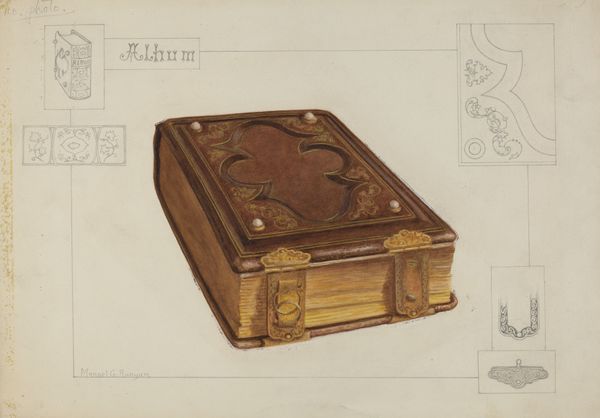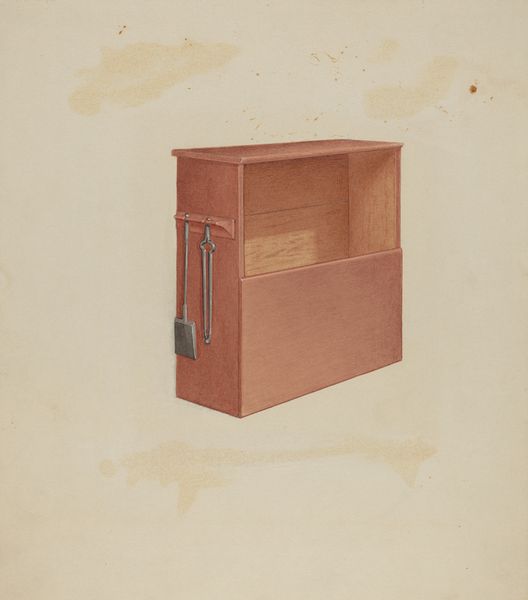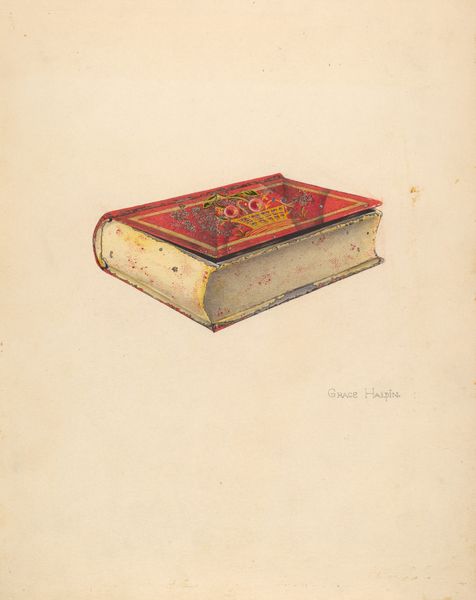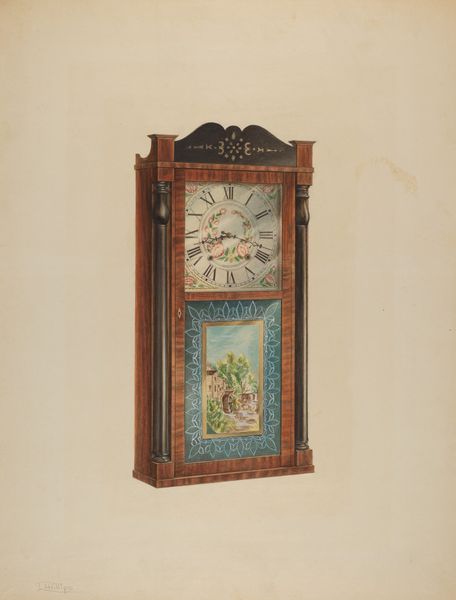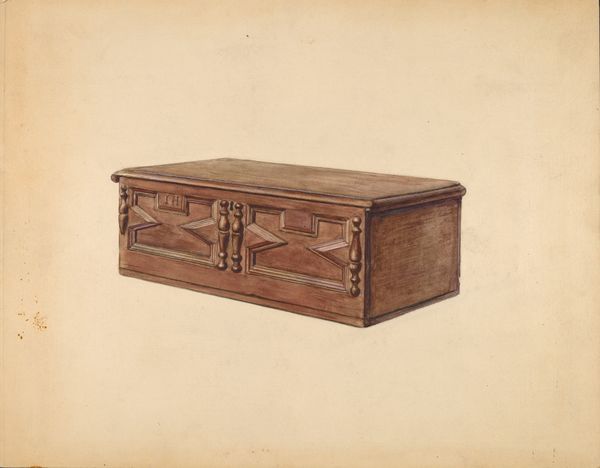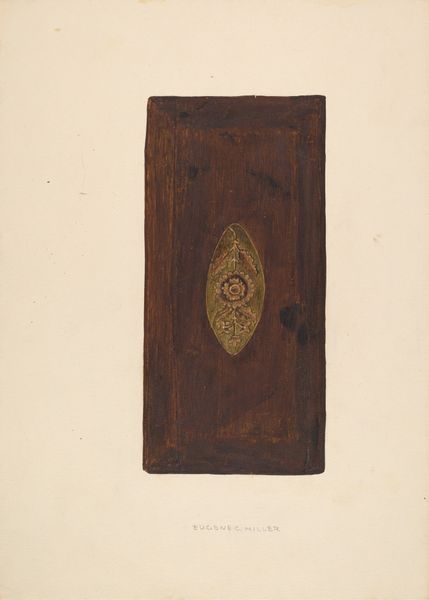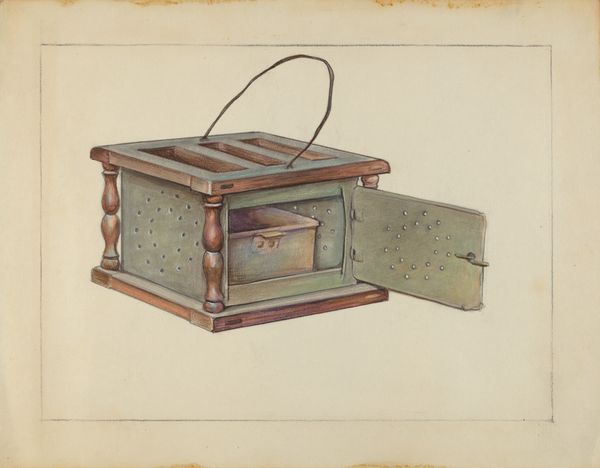
drawing, coloured-pencil, oil-paint
#
drawing
#
coloured-pencil
#
oil-paint
#
oil painting
#
coloured pencil
#
folk-art
Dimensions: overall: 41 x 49.7 cm (16 1/8 x 19 9/16 in.)
Copyright: National Gallery of Art: CC0 1.0
Curator: This is a work titled "Spice Box," likely created around 1937 by Angelo Bulone. It's a combination of drawing, oil paint, and colored pencil. Editor: Oh, I love this. The dark green is almost somber, but then there’s this cheerful folk art flower bursting from the drawer, it is gorgeous! What secrets does it hold? Curator: Bulone's artwork invites us to consider what "spice" means culturally, historically, and personally. Spices weren't just flavors; they represented global trade routes, medicinal properties, even status. The box suggests preservation, careful storage—ideas central to how we safeguard cultural memories. Editor: Exactly! And look at that solitary bloom. The tulip-like shape, rendered in warm yellows and reds. It reminds me of the painted furniture my grandmother had – very honest and homespun, don't you think? Curator: Precisely. The use of color, particularly against that dominant green, can symbolize hope amidst the mundane. Consider how this image itself becomes a container, a "spice box" holding and distributing narratives across time. The simple decoration, that single blossom, might represent so many individual stories or domestic rituals tied to such objects. Editor: I get such a strong sense of tradition from it. But there's also something quite resilient in that folk-art sensibility, a stubborn affirmation of beauty in everyday life. Curator: Yes. And let’s not overlook that the item itself-- the spice box --is functional but made precious. This simple box is an enduring metaphor for transformation and cultural memory, all contained within an intimate space. Editor: Looking at this makes me want to dive deep into my family’s history! Curator: And it inspires consideration of our connections to the past and to each other.
Comments
No comments
Be the first to comment and join the conversation on the ultimate creative platform.


